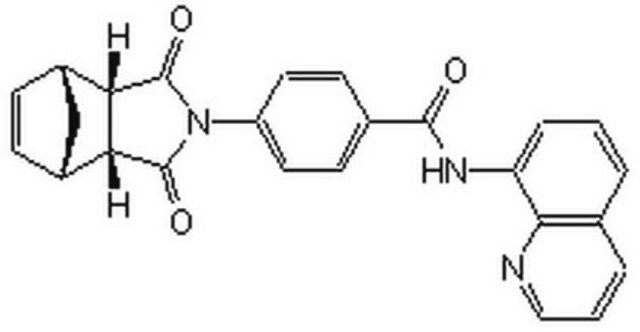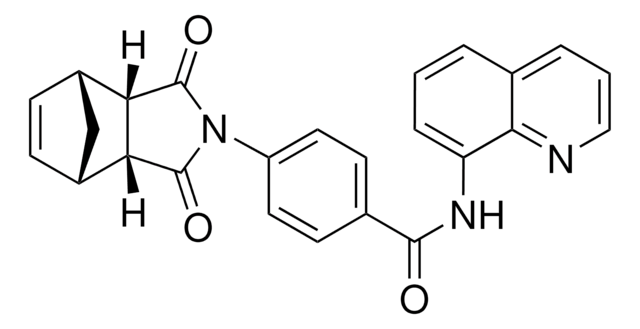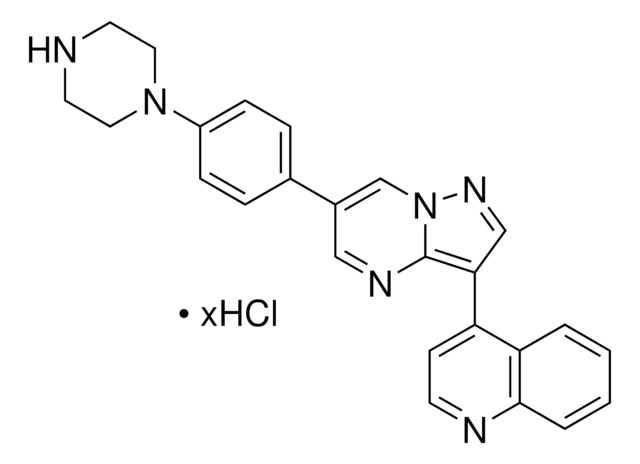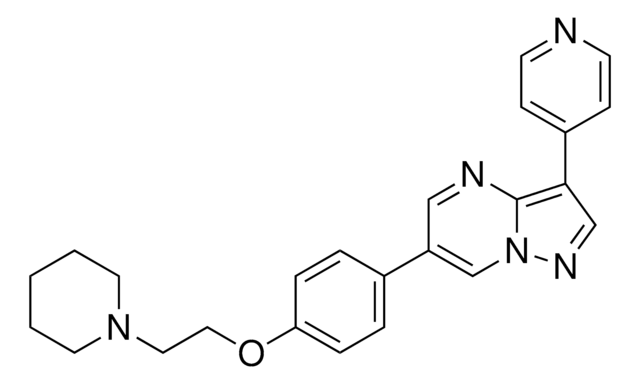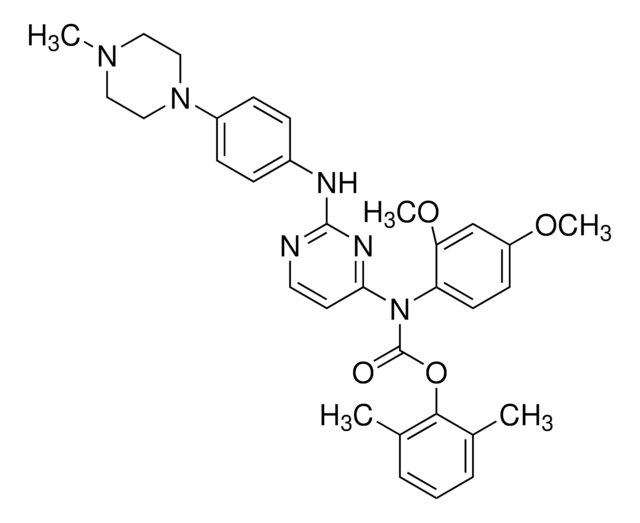SML1307
K02288
>98% (HPLC)
Synonym(e):
3-[(6-Amino-5-(3,4,5-trimethoxyphenyl)-3-pyridinyl]phenol, 3-[6-Amino-5-(3,4,5-trimethoxyphenyl)-3-pyridinyl]-phenol
About This Item
Empfohlene Produkte
Qualitätsniveau
Assay
>98% (HPLC)
Form
powder
Farbe
white to beige
Löslichkeit
DMSO: 5 mg/mL, clear (warmed)
Lagertemp.
2-8°C
SMILES String
NC1=C(C2=CC(OC)=C(OC)C(OC)=C2)C=C(C3=CC=CC(O)=C3)C=N1
InChI
1S/C20H20N2O4/c1-24-17-9-13(10-18(25-2)19(17)26-3)16-8-14(11-22-20(16)21)12-5-4-6-15(23)7-12/h4-11,23H,1-3H3,(H2,21,22)
InChIKey
CJLMANFTWLNAKC-UHFFFAOYSA-N
Allgemeine Beschreibung
Biochem./physiol. Wirkung
BMP signalling is associated with many important physiological processes. It acts a central regulator of developmental processes such as organogenesis, gastrulation, mesoderm induction and endochondral bone formation. BMP signals are also related to diseases including pulmonary hypertension, juvenile polyposis syndrome, fibrodysplasia ossificans progressiva and hereditary hemorrhagic telangiectasia syndrome. BMP signaling inhibition might serve as a tool to study its role in other biological processes.
Signalwort
Danger
H-Sätze
Gefahreneinstufungen
Acute Tox. 3 Oral - Eye Dam. 1
Lagerklassenschlüssel
6.1C - Combustible, acute toxic Cat.3 / toxic compounds or compounds which causing chronic effects
WGK
WGK 3
Flammpunkt (°F)
Not applicable
Flammpunkt (°C)
Not applicable
Analysenzertifikate (COA)
Suchen Sie nach Analysenzertifikate (COA), indem Sie die Lot-/Chargennummer des Produkts eingeben. Lot- und Chargennummern sind auf dem Produktetikett hinter den Wörtern ‘Lot’ oder ‘Batch’ (Lot oder Charge) zu finden.
Besitzen Sie dieses Produkt bereits?
In der Dokumentenbibliothek finden Sie die Dokumentation zu den Produkten, die Sie kürzlich erworben haben.
Unser Team von Wissenschaftlern verfügt über Erfahrung in allen Forschungsbereichen einschließlich Life Science, Materialwissenschaften, chemischer Synthese, Chromatographie, Analytik und vielen mehr..
Setzen Sie sich mit dem technischen Dienst in Verbindung.

